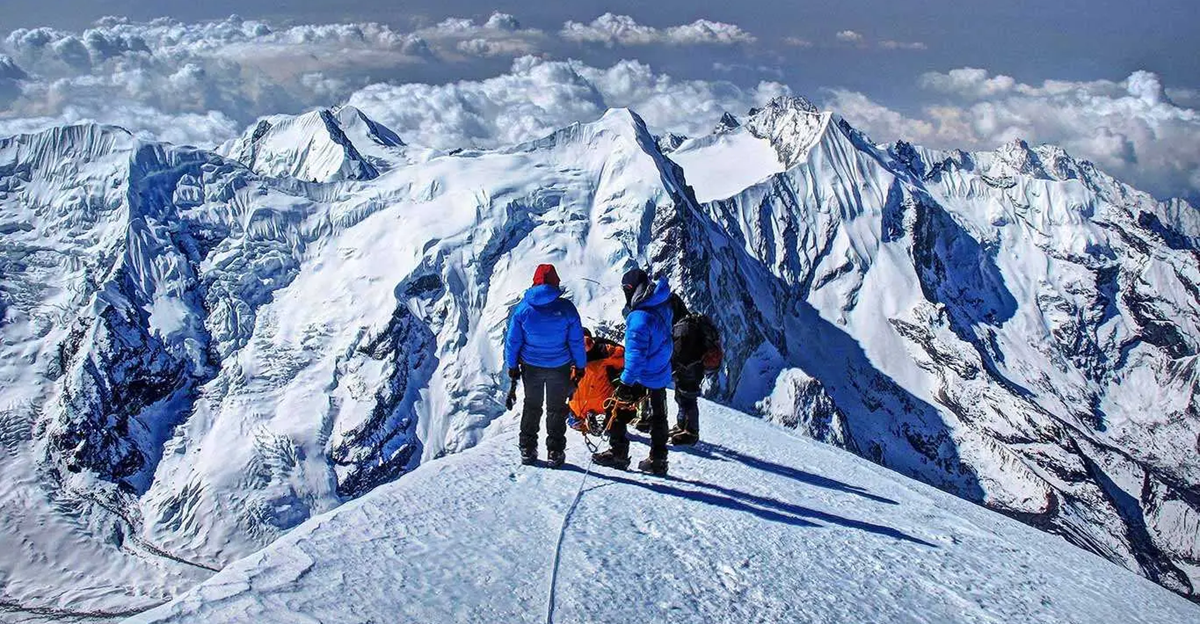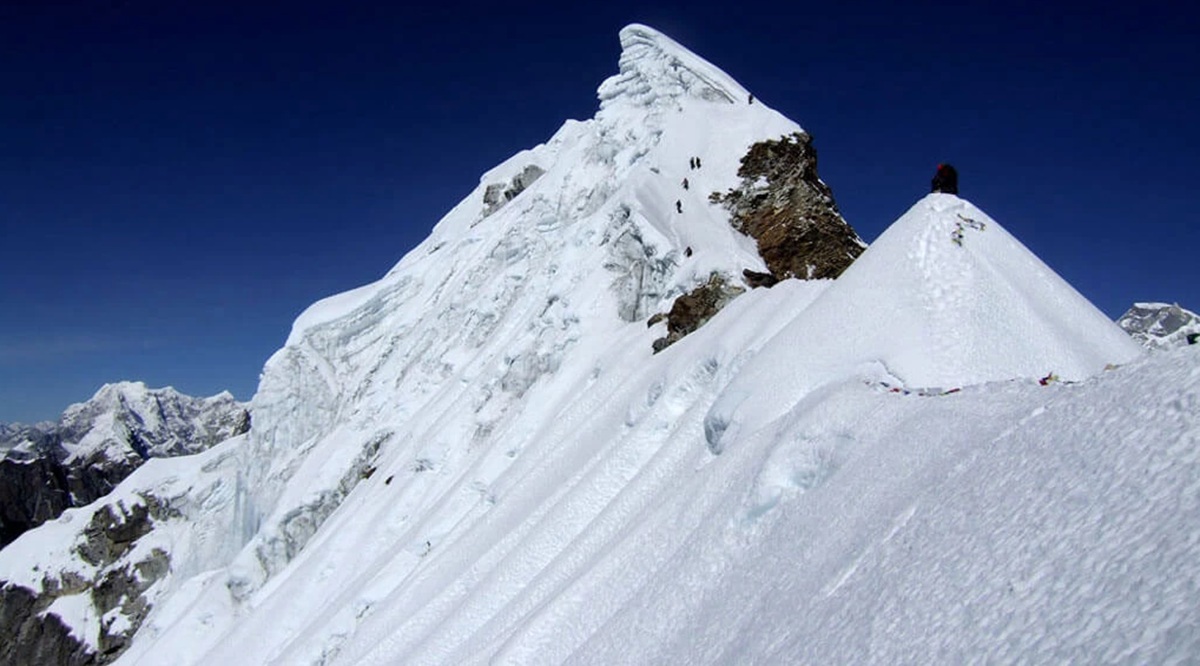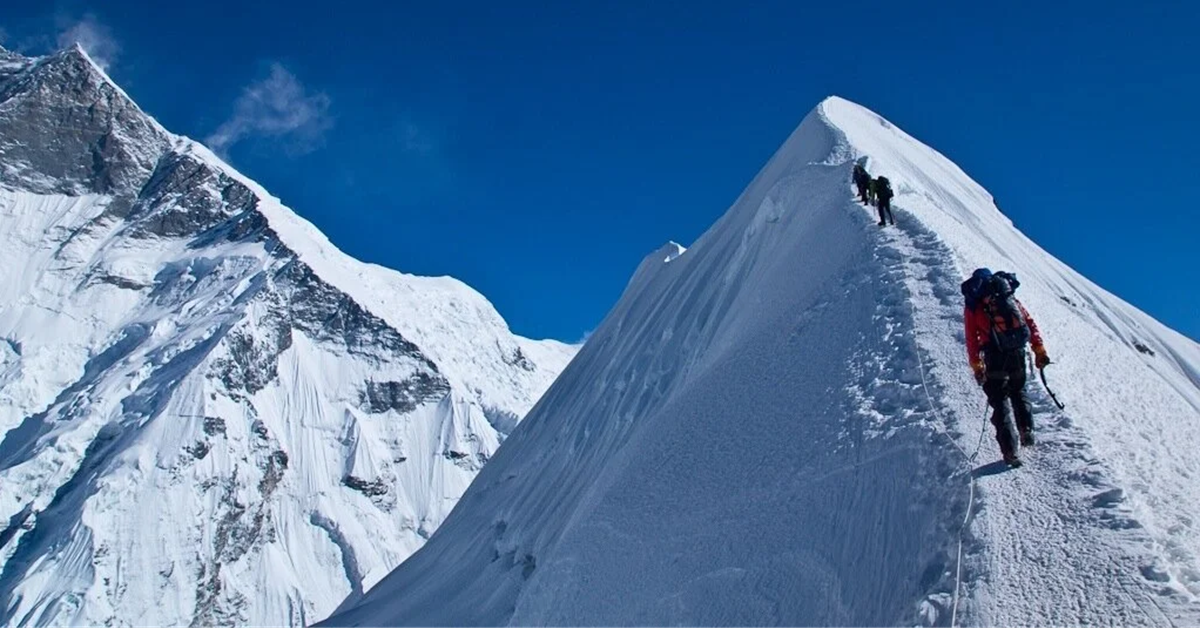Kathmandu: When people think of climbing in Nepal, Everest inevitably steals the spotlight. Yet far from the world’s highest peak, three Himalayan giants are quietly commanding the attention of trekkers and mountaineers worldwide: Imja Tse (Island Peak), Mera Peak, and Lobuche.
These so-called “trekking peaks” have surged to the top of Nepal’s mountaineering charts, drawing thousands of climbers each year and generating the lion’s share of revenue for the Nepal Mountaineering Association (NMA).
According to the Department of Tourism, the NMA manages 27 designated trekking peaks across Nepal. But in the most recent fiscal year (2024/25), just three of them accounted for over 90 percent of climber permits and royalty income. The statistics are striking: of the Rs 169.7 million (US$ 1.27 million) collected by NMA, a staggering 91 percent came from climbers on Imja Tse, Mera Peak, and Lobuche.
Among these, Imja Tse (6,189m), better known as Island Peak, remains the undisputed favourite. Situated in the Everest region, the peak’s name was coined by British mountaineer Eric Shipton in 1951, who thought it looked like an island in a sea of ice when viewed from Dingboche.
Last year alone, 770 expedition teams secured permits to climb Island Peak. In total, 2,398 climbers—nearly three-quarters of them women—attempted its slopes. For many, the attraction lies in its accessibility: climbers trek along the iconic Everest Base Camp trail before veering off to high alpine camps. Its relatively modest altitude compared to Everest makes it a classic “first Himalayan summit” for aspiring alpinists, and the revenue reflects that popularity: Rs 54.2 million (US$ 405,000) in climbing fees was collected from Island Peak alone.
If Island Peak wins in sheer volume, Mera Peak (6,476m) comes out ahead in terms of total revenue. Situated in Solukhumbu district, Mera Peak is the highest permitted trekking peak in Nepal. Although fewer people climb it than Island Peak—2,448 climbers in the last fiscal year—the peak generated Rs 56.4 million (US$ 422,000) in royalties, more than any other NMA-managed mountain.
Why the difference? Simply put, Mera is a bigger mountain and a tougher climb. Reaching its summit involves a demanding trek through remote valleys, glacier crossings, and sustained exposure at altitude. It requires more guides, more equipment, and more logistical support. For adventure seekers chasing altitude without the technical extremes of Everest or Lhotse, Mera offers an irresistible middle ground.
In third place stands Lobuche East (6,119m), located near Everest Base Camp. While slightly less frequented than its two rivals, Lobuche remains an enduring favourite among trekkers looking to add a Himalayan summit to their Everest trek.
In 2024/25, 1,816 climbers attempted Lobuche, generating Rs 43.9 million (US$ 328,000) in royalties. Many adventurers combine Lobuche with a trek to Everest Base Camp, making it one of the most accessible peaks for those already in the Khumbu region. The views from its summit—Everest, Lhotse, Ama Dablam, and Pumori towering above—are considered among the most spectacular in the Himalaya.

The dominance of Island Peak, Mera, and Lobuche isn’t accidental. According to NMA General Secretary and veteran trekking entrepreneur Mohan Lamsal, these peaks tick several crucial boxes for international climbers.
The first is accessibility. Each is embedded within Nepal’s most iconic trekking regions. Island and Lobuche are both linked to the Everest Base Camp trail, while Mera sits in the same district, drawing trekkers eager for a wilder experience.
Manageable difficulty is the second strong point. Though demanding, these mountains are not as technically complex as 8,000-metre giants. They serve as ideal training grounds for climbers preparing for higher peaks.
The third point is that climbers recommend them to each other. The combination of achievable summits, breathtaking views, and a taste of Himalayan expedition culture makes them highly repeatable in the adventure travel market.
As Lamsal explains, “Other peaks may have beauty, but these three are the ones trekkers recommend to one another. That cycle of reputation keeps them at the top of the list.”
For Nepal, trekking peaks are big business. The NMA was created to manage them, offering permits at far more affordable rates than Everest or Manaslu, but still bringing in significant revenue for both the government and the local economy. Guiding agencies, hotels, gear shops, and porters all benefit from the steady flow of climbers.
Among the most prominent agencies is Makalu Adventure, founded by Lamsal himself, which consistently ranks among the top companies sending climbers to NMA peaks. Agencies like his provide the logistical backbone—guides, Sherpas, high-altitude gear, and safety nets—that make these expeditions accessible to thousands of international visitors.
While Island Peak, Mera, and Lobuche dominate, the NMA still manages 24 other trekking peaks scattered across Nepal. These range from the Chulu peaks in Manang to Pisang Peak, Yala Peak in Langtang, and Dhampus Peak in Dhaulagiri.
Yet most of these see only a fraction of the traffic. In fact, some peaks had as few as one team attempt them last year. The reasons are multifaceted: remote access, lower visibility in international trekking circuits, and fewer success stories circulating among climbers.
Climbers and operators also see these trekking peaks as training grounds. A successful ascent of Island Peak or Mera Peak often leads adventurers to set their sights on bigger goals—Ama Dablam, Manaslu, Cho Oyu, or even Everest.
Lamsal highlights the natural progression: “After Chulu East in the Manaslu region, Mera Peak has become the most popular choice for trekkers aiming to step into high-altitude climbing. It’s the bridge between trekking and true Himalayan expeditions.”
The boom, however, is not without challenges. Environmental sustainability in fragile alpine ecosystems is a growing concern. Waste management on popular routes, overcrowding at base camps, and ensuring safety standards remain consistent across operators are all pressing issues.

In response, the NMA and the government have introduced stricter permit systems, mandatory insurance for guides and porters, and campaigns to raise awareness about responsible trekking. Community forests and local municipalities also play a role in ensuring that revenue from trekking peaks translates into local development.
In an era when Everest expeditions often make headlines for overcrowding and commercialization, the success of Island Peak, Mera Peak, and Lobuche tells a different story about Himalayan adventure. These peaks represent the sweet spot of Himalayan climbing: challenging but achievable, wild but accessible, remote yet deeply connected to Nepal’s cultural and natural landscapes.
They are mountains for those who want more than just a trek—but perhaps not yet ready to gamble everything on an 8,000-metre summit. They are mountains where first-time climbers and seasoned alpinists can share base camps, swap stories, and experience the grandeur of the Himalaya without Everest’s price tag or risks.
Nepal’s trekking peaks may not boast the fame of Everest, but they are carving out their own legacy. Last year’s statistics underscore the trend: Imja Tse, Mera, and Lobuche aren’t just side attractions—they are central players in Nepal’s adventure tourism economy.
For climbers seeking to test themselves above 6,000 metres, these peaks remain the ultimate gateway: accessible, challenging, and unforgettable. And for Nepal, they are proof that adventure tourism is thriving far beyond the shadow of Everest.



Comment Here